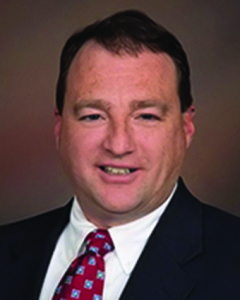 Philip Hastings, Cleveland, Waters and Bass, P.A.
Philip Hastings, Cleveland, Waters and Bass, P.A.While the recent decision by the New Hampshire Supreme Court in Society for the Protection of New Hampshire Forests v. Northern Pass Transmission, LLC did not exactly shake the legal world’s foundation, it illuminates important aspects of the law dealing with highways for developers and landowners.
The Northern Pass case centered on the utility’s proposal to bury a portion of its high-voltage transmission line (intended to bring hydroelectric-generated power from the Canadian border to southern New Hampshire and Massachusetts) within the bounds of a state highway in Clarksville. The Forest Society, which owns land on both sides of the highway, sued to stop this plan on the grounds that it would exceed the scope of the public right-of-way and could not be legally accomplished without the Forest Society’s consent. Relying on case law stretching back to the 19th century, the court reaffirmed that the use of a public highway right-of-way for the placement of public utilities, including electrical transmission lines, is within the scope of the easement. The court further concluded that there was no evidence that the Northern Pass plan would unreasonably burden the Forest Society’s property.
The first point illustrated by the Northern Pass case is the importance of knowing, especially in a dispute with a municipality or utility, the extent of one’s ownership of the land on which a highway is located. The Forest Society’s claim was predicated on the general legal presumption that the owners of land abutting a public highway own to the center line of the highway, subject only to whatever easement rights the public may have. This gave the Forest Society a plausible, albeit unsuccessful, argument that using the highway to bury the utility lines would exceed the scope of the public right-of-way.
Although not disputed in this case, the legal presumption of ownership of the land under a highway by the abutting landowners does not always hold. For example, in providing for a public street, a developer may have unwittingly conveyed full title to the land underlying the road. Alternatively, a developer may have specifically reserved the right to a subdivision road for itself or a homeowners’ association. If that had been the case with Rte. 3 in Clarksville, the Forest Society would have had no opportunity to challenge the plan to bury the utility lines.
The second point illustrated by the Northern Pass case is the importance of paying attention to the possible scope of the easement granted in a highway deed to a municipality. Although the Forest Society owned the land under Rte. 3, its opposition to the Northern Pass plan failed because of the scope and nature of this particular easement. As a general matter, the scope of an easement will be defined by its terms, and the holder’s use of the easement cannot exceed what was reasonably intended by the terms of the easement. However, the express terms of an easement are often vague, and courts will infer the scope of an easement from the context.
The Northern Pass case demonstrates that the scope of a highway easement can be quite broad. It is not necessarily limited to the movement of people or property in vehicles. Quoting from a 1957 decision, the court stated that “[as] science develops highways may be used for any improved methods for the transmission of persons, property, intelligence or other means to promote sanitation, public health and welfare.”
There is very little a landowner or developer can do to narrow the scope of a highway easement once created. However, it may be worth reviewing the specific language of the documents that created the right-of-way to see if it lends itself to a more constrained interpretation of the public’s rights. Landowners should also consider seeking a formal discontinuance of the public’s rights in little used or “paper” streets.
In most new projects in which a public street is being created, developers tend to accept the municipality’s standard highway easement, paying little attention to the potential consequences. Given the state of the law as affirmed in the Northern Pass case, and rapidly evolving technology (new energy sources, unmanned drones, etc.), developers should consider ways to limit the scope of the easement in order to avoid undesirable uses of the street at some point in the future. For some projects, it may make sense to forego entirely the benefits of making a street public and keep complete control of the roadway.
Philip Hastings, Esq., is the president, shareholder and director of Cleveland, Waters and Bass, P.A. in Concord, N.H.







